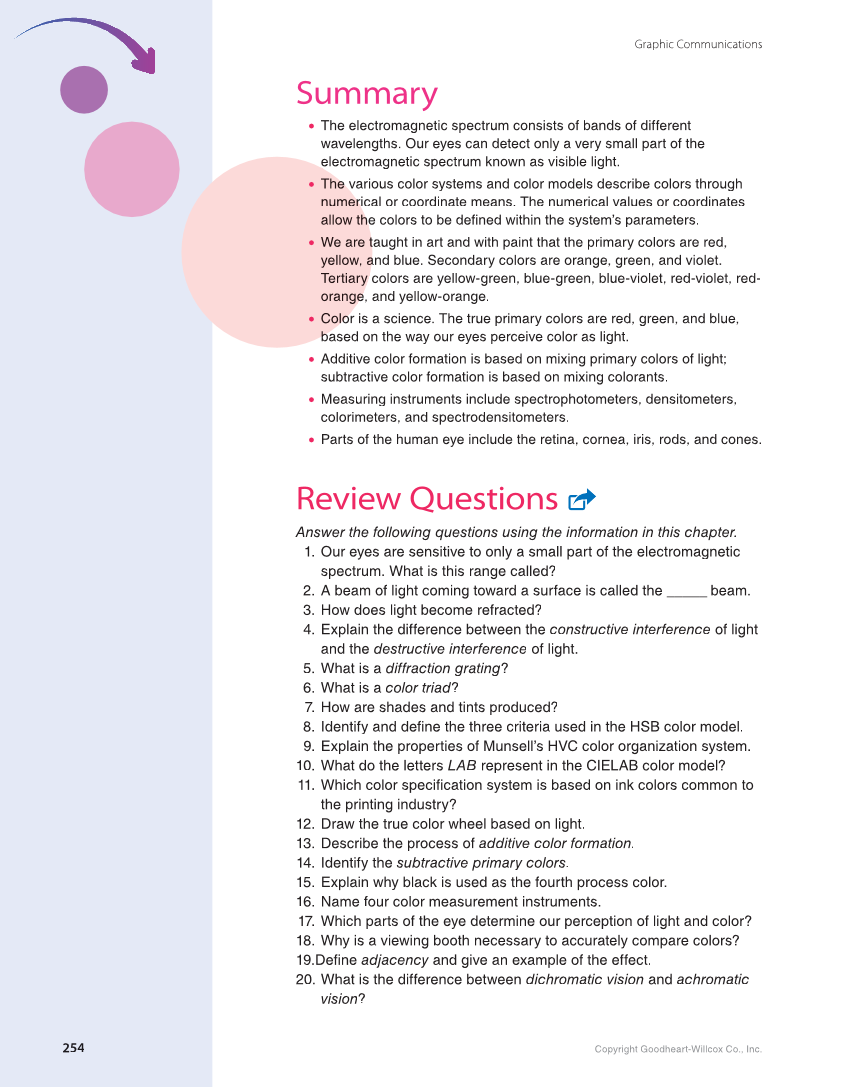Graphic Communications
Copyright Goodheart-Willcox Co., Inc.
254
Summary
• The electromagnetic spectrum consists of bands of different
wavelengths. Our eyes can detect only a very small part of the
electromagnetic spectrum known as visible light.
• e various color systems and color models describe colors through The v
erical or coordinate means. The numerical values or coordinates numer
he colors to be defined within the system’s parameters. allow the
• taught in art and with paint that the primary colors are red, We are t
and blue. Secondary colors are orange, green, and violet. yellow, a
y colors are yellow-green, blue-green, blue-violet, red-violet, red- Tertiary
e, and yellow-orange. orange
• olor is a science. The true primary colors are red, green, and blue, Colo
based on the way our eyes perceive color as light. ba
• Additive color formation is based on mixing primary colors of light;
subtractive color formation is based on mixing colorants.
• Measuring instruments include spectrophotometers, densitometers,
colorimeters, and spectrodensitometers.
• Parts of the human eye include the retina, cornea, iris, rods, and cones.
Review Questions
Answer the following questions using the information in this chapter.
1. Our eyes are sensitive to only a small part of the electromagnetic
spectrum. What is this range called?
2. A beam of light coming toward a surface is called the _____ beam.
3. How does light become refracted?
4. Explain the difference between the constructive interference of light
and the destructive interference of light.
5. What is a diffraction grating?
6. What is a color triad?
7. How are shades and tints produced?
8. Identify and define the three criteria used in the HSB color model.
9. Explain the properties of Munsell’s HVC color organization system.
10. What do the letters LAB represent in the CIELAB color model?
11. Which color specification system is based on ink colors common to
the printing industry?
12. Draw the true color wheel based on light.
13. Describe the process of additive color formation.
14. Identify the subtractive primary colors.
15. Explain why black is used as the fourth process color.
16. Name four color measurement instruments.
17. Which parts of the eye determine our perception of light and color?
18. Why is a viewing booth necessary to accurately compare colors?
19.Define adjacency and give an example of the effect. y
20. What is the difference between dichromatic vision and achromatic
vision?
